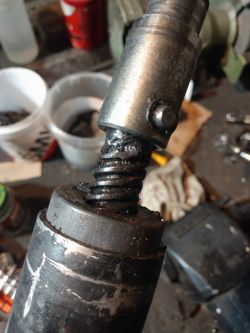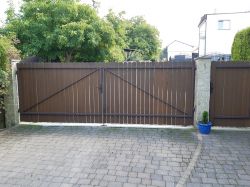Quote: In the Thalia control panel, it is actually possible to adjust the closing position of the gate with the pressure against the central stop
But then the electric limit switches do not work, i.e. the central stop is then necessary.
In your situation, most of the advantages favor the BFT - lightweight gate, so the low-noise 24V Phobos actuators are better suited. They also have a much more culturally active redundancy and a lot of added value - anti-crush (in 414 only in a paid option and it works a bit cajmer).
414 are "gniotsa not break" actuators, maintenance-free, for heavy gates, but clunky and with a low work culture - let's say a large gate at a farmer who hangs, how it works to work without looking (they also have a second ecological niche - heavy gates in tenement houses in the old construction industry - the so-called rental ones - they can do it without any problems, they are much cheaper than professional motors for heavy gates, and the culture of work or some extra options the community does not care about - it has to open and close as long as possible, CHEAP, no breakdowns and that's it).
Theoretically, it is best to mount the actuator exactly in the middle of the leaf height - but if your gate is not twisted and fairly stiff (i.e. when pushing the bottom to the stop of both wings, the top will not break apart), then you can mount it to the bottom crossbar.






